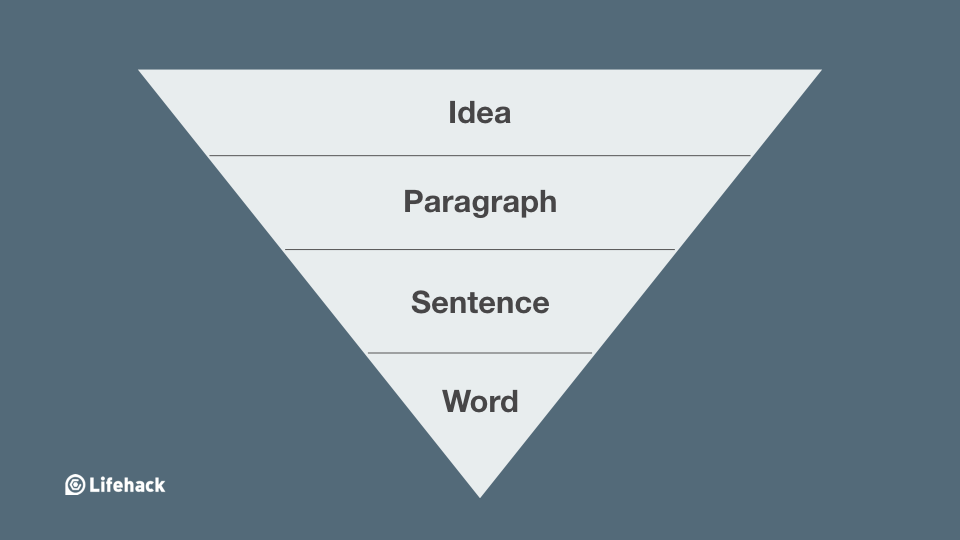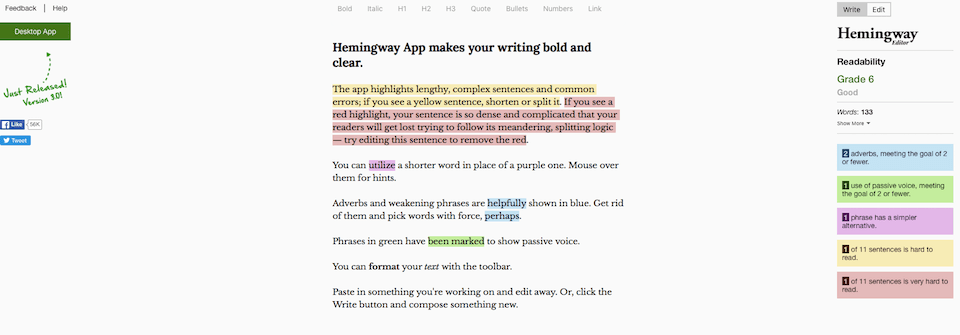Before I start, I want to clarify a good writer pays attention to every level — word, sentence, paragraph, idea — of an article. And you NEED to take care of all levels as well.
Now we’ll start with the easiest level – word first. Then we’ll go on with each level and at the end recommend a big list of really useful sites and books for your long term improvement.Let’s start with words. Use simpler words. There are many words for you choose from. Shorter, simpler, smarter. Example: Replace “however” with “but”, “utilize” with “use”. Use synonyms. Lost for words? Use tools like Thesaurus or Grammarly to find synonyms. Avoid passive voice. Passive voice and passive-sounding verbs sound boring and indirect. It’s always stronger to use active voice. Example: (AV) “Your boss asked you to work overtime.” vs. (PV) “You are asked to work overtime by your boss.” Use “you” and “I”. Often we overuse the pronouns “we” and “us” to be relatable. While they show your empathy, “you” directs the message straight to your readers. Also, sprinkling in some “I”s makes you more genuine with your readers. Delete the “-ing”. In most times, the “-ing” adds no value to your sentence. Example: “The ‘-ing’ adds no value.” vs. “Adding the ‘-ing’ has no value.” For your long term benefit, you should keep a list of new words and amazing expressions for future use. To make it more handy you can download the vocabulary.com app so that you can jot down the words so easily.
String your words into sentences.
Golden rule: Delete the word “that”. An excessive amount of “that”s is annoying to read. We tend to think THAT the more connective words we use, the easier it is to read. Read it without “that”, it sounds stronger. Less is more. (See what I did there?) The best copywriting follows this rule: use 2 or 3 words in a sentence. Nike’s “Just Do It”, McDonald’s “I’m Lovin’ It”, Avis’ “We Try Harder” are all essence of their own brand and images. Also, avoid hedges, disclaimers, and tag questions to keep your sentences shorter. They make you sound less persuasive and convincing. Example: “An afternoon nap boosts your productivity.” vs. “I think an afternoon nap could possibly boost your productivity, don’t you think so?” Label your readers with nouns. “I dream a lot” “I’m a dreamer” In fact, these two sentences convey the same message. The latter generates a longer-lasting attitude on your reader’s minds, because the noun is central to your reader’s identity rather than a simple action. BOLD OR CAPITALIZE TO EMPHASIZE. Obviously. Check your sentences. Hemingway provides suggestions on word replacements, sentence structures, and readability assessments to strengthen your writing. Check what you’ve written before proceeding.
In the long run, imitate the styles of great writers is a great way to strengthen your writing. Mix in your writing and Voila! You have a masterpiece.
Paragraphs are equally important.
Again, less is more. Keep your paragraphs to 2 or 3 sentences long, or even a single sentence long. A single sentence paragraph draws in a lot of attention. Also, use coherence markers. Copywriters seldom use coherence markers, because these words and phrases don’t add much value. But research[1] has discovered the use of coherence markers (like but, so, therefore) increase clarity and persuasion, so you should keep them in your writing. To develop better writing long term, you should rewrite great paragraphs with your own words.
Coming up with an idea is already hard enough.
All storytellers follow a simple formula — present a problem, proceed with an experience, then solve the problem. There are also other storytelling and copywriting skills, click here for more. A free writing session a day. The best way to finesse your craft is to practice every single day. Give yourself a timed session to write ideas or passages under a theme. You might be stuck at first, but soon practice makes perfect.
Organization is key.
Overwriting is common problem. And you need to be willing to cut unnecessary details from your article. People cling onto what they’ve written because they don’t want to abandon their creations. But the real lesson is to learn to delete extra information. Biased writing is also a huge “no”. Even when you are writing with a stance, often include several drawbacks (a.k.a. a two-sided argument) makes you more convincing and rational, so your readers are more willing and comfortable to join your side.
Don’t forget your headline and subheadings.
Famous marketer David Oglivy once said[2], It is SOOOOOO important to attract your readers with your headline. If your headline is not good enough, it doesn’t matter how amazing your content is. But don’t ever write clickbait headlines. An eye-catching headline without a well written content isn’t attracting either.
At last, write comfortably.
I have given you many tips and tricks to improve your writing skills. Don’t be stressed to follow certain rules, or a particular writing style. Keep these pointers in mind, and fuse your own personality and spunk to create beautiful pieces. And if you have the passion to further improve your writing skills, do read the following books and visit the sites below that are truly helpful.
Highly recommended books for you to write better
The Elements of Style On writing well Bird by Bird: Some Instructions on Writing and Life The Only Grammar Book You’ll Ever Need: A One-Stop Source for Every Writing Assignment The Sense of Style: The Thinking Person’s Guide to Writing in the 21st Century Writing Tools: 55 Essential Strategies for Every Writer Writing That Works; How to Communicate Effectively In Business Everybody Writes: Your Go-To Guide to Creating Ridiculously Good
Great websites for your specific writing needs
For copywriting For stories For emails For cover letters For blogs

